In this article, we will discuss some of the many benefits that a head mouse like Mouseware can offer for those who need it.
A head mouse is a type of mouse where the user controls the cursor by moving their head. It makes use of head movements as cursor commands. Since the traditional computer mouse is only suitable for operation using hands, a head-controlled mouse can be considered a great alternate for people who are unable to use their upper limbs. In short, it is more convenient for people with limited mobility to use this instead of a conventional mouse.
And one such device is Mouseware.
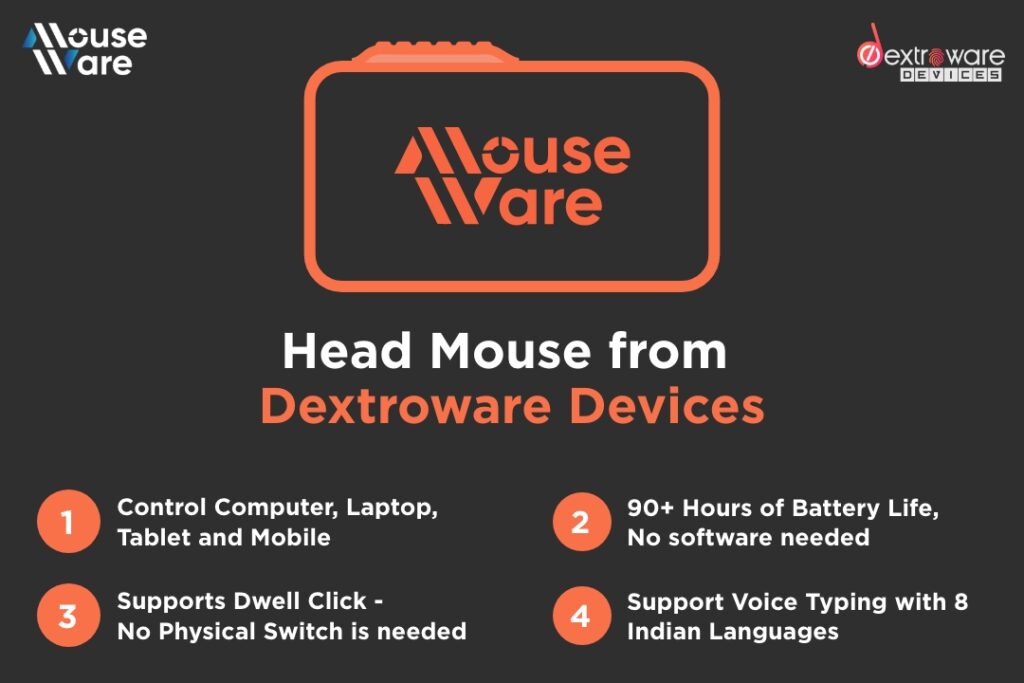
For the mouse click, mouseware uses a switch that can be connected to the USB stick provided with mouseware. Older technology used a combination of webcam and face tracking software to perform the mouse actions. However, this technology is outdated and had many flaws such as not being able to track the head movement in a less than ideal lighting condition.
Although the conventional computer mouse is simple to use and pretty self-explanatory, this type of head mouse has more ergonomic benefits than the traditional non-head mouse. Let us see some of them listed below.
One of the main advantages of using a device like Mouseware is that your arm and hand from wrist to fingertip are relaxed, providing total comfort for longer periods. Since the head mouse technology allows the user to move the mouse pointer with precision by following their head movements, users can relax their body and work at ease.
People with special needs especially people with carpal tunnel syndrome, cerebral palsy muscular dystrophy, sclerosis, and als (Amyotrophic lateral sclerosis) can also benefit from this type of computer mouse since the head mouse eliminates the need for any movement of the hands.
Even though the term head mouse sounds a little too complex, it is one of the easiest-to-use devices out there. All you have to do is connect the mouse to the system, just like how you do it with a regular wireless mouse. Once that is done, you can start using the head mouse right away.
That is not all that can be done. The head-controlled mouse also offers a lot of flexibility for its users. Devices like Mouseware come with exclusive features that enable voice commands and multiple switch options for its users. These switch options such as dwell click and footswitch can be accessed by all.
Older technology used a combination of switches including a footswitch, universally switch, sip or puff switch. With mouseware, we also provide a footswitch and universal switch with the exception of a sip or puff switch.
The problem with the sip or puff switch is that there is a concern with the hygiene of the switch. The sip switch primarily works when the user sip(s) the switch. And with puff switch, the user blows the switch to perform the mouse click.
Along with the above-mentioned switch, we also provide dwell click with our proprietary software called "Mouseware panel". Which performs the click by hovering over the desired icon or menu.
While potentially reducing the overall workload, a head mouse option may actually increase productivity. For example, a screen reader can be used to control the mouse pointer with voice commands or Braille. Having the ability to communicate via voice and/or braille, while on a keyboard (i.e., Skype or JAWS) is important.
Another great feature that comes with the head mouse is that it effectively enables multitasking due to its hands-free approach. So the next time you want to attend that video conferencing call while cleaning or cooking, you would have it all covered.
With the inclusion of Voice typing with our mouseware panel. Users can now type an email(s), use Facebook to share posts, and send out messages to their loved ones.
Needing additional help at all times can be a little exhausting and confidence-lowering. In order to have a sense of great self-esteem, it is essential to be able to take care of our tasks by ourselves, as much as possible.
Having a head-controlled device like Mouseware enables independence for people who may otherwise be unable to operate regular computer screen functions independently. This can minimize risks and lowers costs associated with medical care or rehabilitation by allowing individuals greater accessibility within their homes.
For any type of assistive technology, it needs to be portable for it to be used whenever and wherever the user goes. Head mouse and similar assistive technology like quha zono are often small and portable. Wireless Computer sensor(s), especially Mousware, are designed to be worn on the head easily to be used like any other device like a computer mouse or a joystick.
Mouseware is also adaptable, based on the computer’s operating system and software including Microsoft windows. Users don’t have to worry about any sort of compatibility issues, as the device has been built to adapt to any system.
Apart from the fact that it is a more comfortable and less tiring way to work with computers, another major advantage of using a head mouse over a traditional one is its accessibility. Anyone who suffers from some form of disability can take benefit from this type of assistive mouse or head mouse as it does not rely on hand movement as other mice do.
With proper integration, people can also work on their windows computer to control their thermostat, write documents, send out emails using the head mouse as a primary input device without the use of their hands.
Head Mouse is ideal for people who are currently using a standard computer mouse, keyboard, or a Virtual keyboard to control their Tablet, Laptop, or their TV for clicking and other types of Cursor and mouse pointer movements.
In conclusion, this head mouse is a great alternative to the traditional trackpad or joystick which requires hand movements. The device has numerous benefits from being more ergonomic to aiding people who have physical disabilities or assistive mouse. This provides not only less strain on your hands, but also increased comfort for your neck, back, and shoulders by only relying on the user's head movement and provides truly a hands-free access.
So if you are considering purchasing a head mouse for yourself or someone you know who has a hand or arm difficulty that makes it difficult to use a traditional mouse, consider this head mouse alternative ‘Mouseware’.
To know more, check out our website.
You can also place pre-orders through our website if you or someone you know will highly benefit from this.
Amputees may require some additional assistance when it comes to daily tasks.
That's why we have curated a list of must-haves that we recommend to help ease their day.
Read more about these products below
Caretakers play a huge role in an amputee's life. Having a trustworthy companion is super crucial.
Having someone to rely on is a necessity when it comes to people with disability. So, if you know a person with a disability, be there for them.

Mobile phones are great. You can make calls with them. Get any information you want on the fly. But an amputee needs a special cellphone holder to make their lives easier.
So we recommend you invest in an accessible cell phone holder.

Mobile phones and smart gadgets have become like an organ. They are a part of everything you do, thanks to the innumerable features it offers.
But using them can be a little straining for amputees. That is why, Mouseware is a device that should be invested in.

It's not always possible for PWDs to rely on someone to do any task that requires simple upper limb movement.
Using a prosthetic hand makes a huge difference, with this.
We recommend you check out Grippy from Robobionics here: https://robobionics.in

Another product that is worth the investment simply because it gives a sense of freedom, is an Assistive Oral Care Device that can make your mornings easier.
We recommend Sociodent for this.
Check them out here: https://sociodent.in
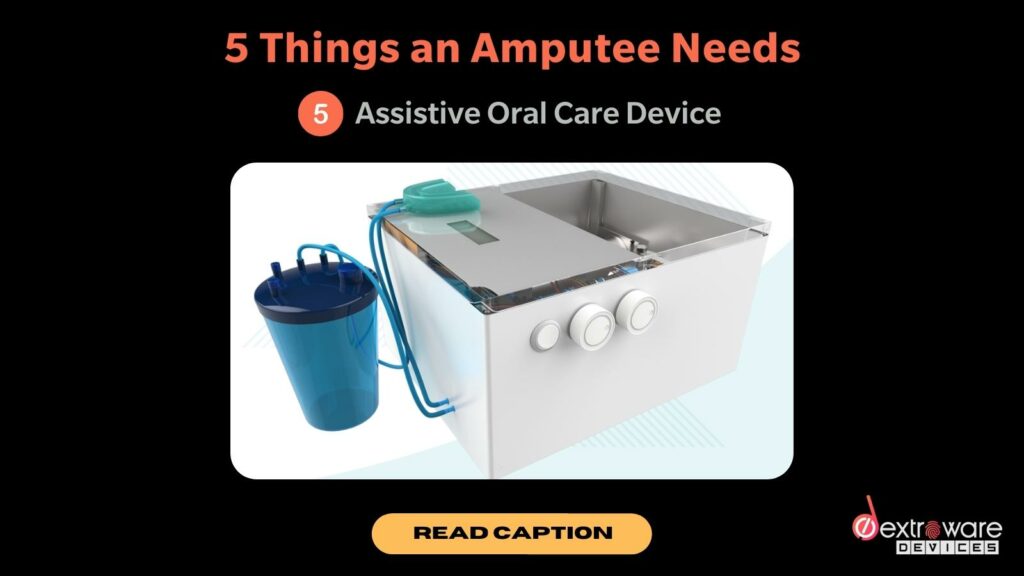
Gone are the days when most tasks required manual labor. With advancements in technology, the world is becoming a more inclusive place that can accommodate all individuals. Although some people believe that technology is taking over the employment market. Technology in reality is a mere tool that is creating a new avenue of jobs every day.
With the power of assistive technology, users with major and minor disabilities are still able to compete for secure jobs. This has made plenty of lives easier and better. One such invention is the adaptive switch.
Let see what are topics we cover In this article,
An adaptive switch is an accessibility device that allows people with movement-limiting disabilities to control technology and operate electronic devices while additionally having the ability to move them. Instead of performing complex actions like turning a knob, adaptive switches will provision easier movement solutions such as pressing a button. It's feasible to be a switch adapter for toys, home appliances, voice-output communication tools, computers, and a variety of other things.
Adaptive switches for special needs provision a link between the technology and the person with a disability. They're created to fit the person's unique ability, and they modify the standard switch to give the person access. When students with disabilities use such switches, they can be more independent and participate in activities at home, school, and in their neighborhood.
Instead of the usual on and off, the adaptive switch has a range of actions that the user can use to toggle and control various electrical appliances.
Adaptive switches have a rotating knob that sends a signal to different modules, depending on which way it is turned. These modules could be for lights, appliances, hot water heaters, and so on. This way, the adaptive switch can provide functionality to those who have difficulty with their hands or arms or even with both. There are various communication devices that can used by persons with disabilities with the help of Adaptive switches.
Adaptive switches, with respect to smart devices, are plugged into the USB port of a computer or laptop. They then connect to programs that run on that device, like Microsoft Word or Google Chrome. Users can then use these programs with their assistive switches. This makes it easier for users to complete tasks independently, which is crucial for people with limited mobility.
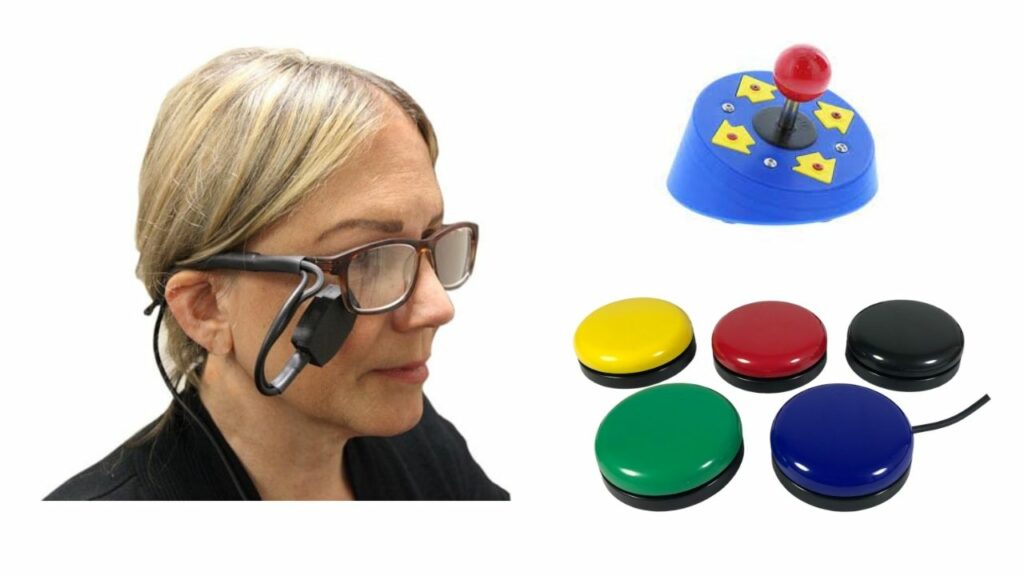
The way adaptive switches are employed, their distinctive features, the response necessary to activate the switch, and the kind of support they provide are all factors to consider. Adaptive switches are available in a variety of areas.
Sound-activated switches allow people with movement disabilities to operate the switch using their voice or any other identifiable sound. The switch can be activated by simply uttering "ahhh" or other vocal sounds. They provide tactile feedback with a click sound to let us know about the switch being pressed.
These are a variety of switches that allow people with restricted movement to access gadgets with the tiniest movement of their fingers or some other part of the body. The joystick is another example of a device in this category. It can be attached to the armrest's tip. By moving the joystick in different directions, joysticks can be used to control more than one sort of equipment. A phone, tablet, TV, or an array of Bluetooth-enabled gadgets can all be activated with the same joystick.
Light switches are actuated by the movement of the eyes. Until the user blinks, the switch is off. It interrupts with an infrared beam as soon as the user blinks, closing the switch.
Switches for wheelchairs and bedside switches are mounted to the user's bed or to the wheelchair's armrest. Fingers engage with certain switches, while shoulder movement, neck motion, sound, and vibration activate others.
The activation surface on pillow switches is usually soft foam. The soft surface provides physical feedback as well as an auditory click when pressed. Head, shoulders, arms, and hands can all be used to trigger the switch.
Saucer switches are special ability switches for people who can't manage or sustain the hand or wrist movements required to activate standard plate switches. Saucer switches are activated with a light touch and can be slanted to suit different talents.
Plate switches are plate-like shaped button switches that can be used by those who are incapable of using small switches, due to injuries in the fingers or other disabilities. They have a large surface and are lightweight and are specifically designed to respond even to the slightest touch.
Mouth, sip, and puff switches have a mouthpiece that allows the user to issue orders by sipping or puffing. A sip creates negative pressure, while a puff creates positive pressure, which turns on or off the switch.
Adaptive switches are created to provide a better experience for physically challenged or disabled people. This single switch makes a huge difference, thanks to its simplicity and ease of use. They tend to work as a substitute for the traditional switches and provide environmental controls to the user enabling them to control many types of electrical devices.
Studies show that adaptive switches can help disabled people in many ways. For one, they can improve independence by reducing the need to ask for help with tasks like turning on the lights inside the house.
Secondly, they can reduce injuries for these individuals by cutting down on the amount of time spent using their hands or arms for simple tasks. This is also physically less straining for the users. And lastly, adaptive switches can improve the quality of life because they allow disabled individuals to be more self-sufficient overall.
Another great benefit for people who are physically challenged or disabled is that these switches are capable of activating speech-generating devices. This in turn can help users in places with voice command requirements. For example, Google’s Voice Search, Microsoft’s speech-to-text converter. Since these people often have difficulty pressing regular switches with their hands, adaptive switches provide an easier way for them to control devices such as electronic gadgets, wheelchairs, televisions, and fans.
We provide some of the best adaptive switches along with the essential package of Mouseware. You can learn more about Mouseware by clicking the link below.
In conclusion, adaptive switches are a great option for individuals who may have limited motor skills or coordination, and they can also be used in any situation that requires multiple devices to be controlled. They can be used for controlling many types of devices and are easy to install. Like mentioned earlier, they don't require a power source and are less expensive than other devices. Adaptive switches are also much safer because they do not have exposed wires.
We also recommend your read about How people with Upper limb disabilities can use Head controlled mouse to access technology and interact with Smart devices.
If you want to share your feedback, suggestions, and opinions with me, drop a comment below, and I would love to connect with you.
Head controlled mouse are the god send for people with upper limb disabilities. This was one of the quotes from the person who tried our head controlled mouse. We are living in a technology-driven world that is constantly evolving to become more inclusive. People across borders are now closer than ever, with the internet bridging all gaps in relationships, businesses, and other aspects of life.
I am sure you need no introduction to the significance of Smart Devices. Every household owns a smart device these days, thanks to affordable internet pricing. With Covid-19, people are now forced to work with Smart Devices to carry out their daily routine.
Now you might be thinking, "Smart Devices are so easy to use. It is like having the whole world at your fingertips". But here is the unfortunate news. That is not the case for all.
No, I am not referring to the non-tech-savvy. That is a discussion for another time. I am talking about the people who are well-aware and yet have a hard time operating such devices.
We are referring to Individuals with disabilities and medical conditions.
So often, we fail to realize how these smart devices are designed. With limited flexibility in operation, laptops, PCs, and mobile phones are not designed to keep the differently-abled people in mind. As a result, the members of the disabled community are unable to avail the wide range of benefits that these smart devices offer, irrespective of all the fantastic features that the device gets with each update.
To understand how big of a problem this is, we got in touch with Dr. Nonita Gangwani. She is a Ph.D. Graduate suffering from Multiple Sclerosis, both encountering their own set of challenges. Talking to them gave us a broad perspective on the obstacles in the life of both a student and a working professional.
Here's what we found.
Dr. Nonita used the tip of her nose to browse through her phone and text people.
It was heartbreaking to see a strongly determined individual face extreme challenges to perform the same tasks that we take for granted.
That is when I knew that I had to put my expertise in Electronics & Communication Engineering into practice. I wanted to develop an affordable solution that can assist and ease the process of using a smart device.
Hence, the beautifully designed MouseWare was born.
Let's see what we will cover in this article,
Powered by Assistive Technology, MouseWare is a hands-free computer mouse designed for the disabled. Since the computer mouse has a single function and can access the virtual keyboards already in place, this seemed like the apt component to be replaced with an alternate solution.
As mentioned earlier, I came up with this solution to help people with disabilities (PwD). The idea first sparked when one of my friends who met with an accident could not use smart devices till his recovery. He had time and energy in his hands and yet could not go about his daily routine.
"What if there was a solution that allowed people to work from home, even with an injured arm? And what if the solution was handy for people with disabilities as well?"
I soon began to do some research. I implemented everything that I've learned to build an efficient headband that the user can wear as an alternative to the computer mouse pointer
Unlike a wired mouse that needs to be plugged into the computer, MouseWare, as the name suggests, is wireless and a wearable headband. Let's discuss more in detail what makes MouseWare what it is.

The band is made up of soft elastic and sits comfortably on the head, irrespective of size. This adjustable band also mounts a sensor box that acts as the brain of MouseWare.
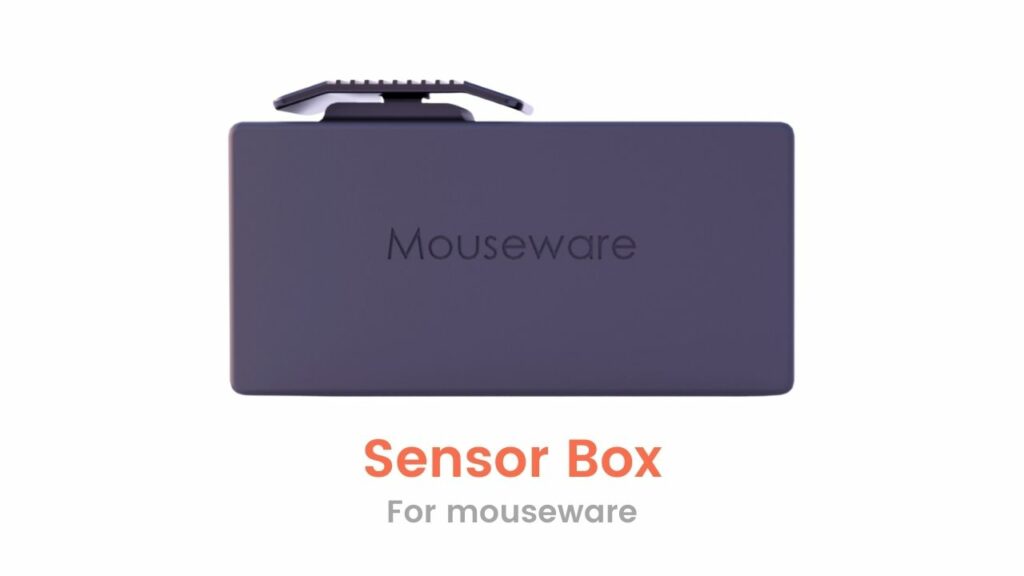
The sensor box is a small box-like structure as small as a matchbox, mounted on the side of the headband. This is where all the magic happens.
The sensor consists of a module that is capable of tracking head movements with precision and performs all the actions of a standard computer mouse when connected. Since the sensor sits firmly on the head, even the smallest of head movements is registered. This precision allows Mouseware to move the cursor with the natural movements of a user
For instance, if you want to move your cursor to the top-right corner of the computer screen, lift your head upwards and turn it right to reach the desired location. If you notice any physical difficulty in doing so, you can adjust the sensitivity level in the Mouseware Panel, a software that is provided with Mouseware to make your cursor respond to slight movements.

This is a simple USB drive that can be connected to your smart device through the device's USB port. This is the component that establishes the connection between the head-wearable computer mouse and your smart device with the help of the standard mouse drivers found in your smart device. The best part about this setup is that it requires no software installation. It is your typical plug-and-play device.
Once the cursor is at your desired location, there are a couple of ways to perform a mouse-click. This depends on which of the following accessories you choose to use.

This is a pedal-shaped button that is pressed by foot to make the corresponding click

This is a large button-shaped switch that can be strapped anywhere on your body or elsewhere for easy access
This type of button switch is currently produced and distributed by Origin Instruments with their Orby Switch

It is a small switch that can be worn on the finger, which on click can simulate an actual computer mouse action
We also recommend you check out the Adaptive switch collection from Enabling devices

This is a software-based method to perform mouse clicking. The user does not have to touch a switch physically. Instead, they can locate the point on the screen, and the rest is taken care of.
If you would like to learn more about the different types of Adaptive switches available in the market for people with Movement disabilities, we recommend your read our blog on Different Types of Adaptive switches and how they can help you?
So, you might be wondering, "How is this solution hands-free when all that you've talked about is the mouse?"
Well, my friend, this is where I tell you about one of the best features of MouseWare.
Voice-enabled typing.
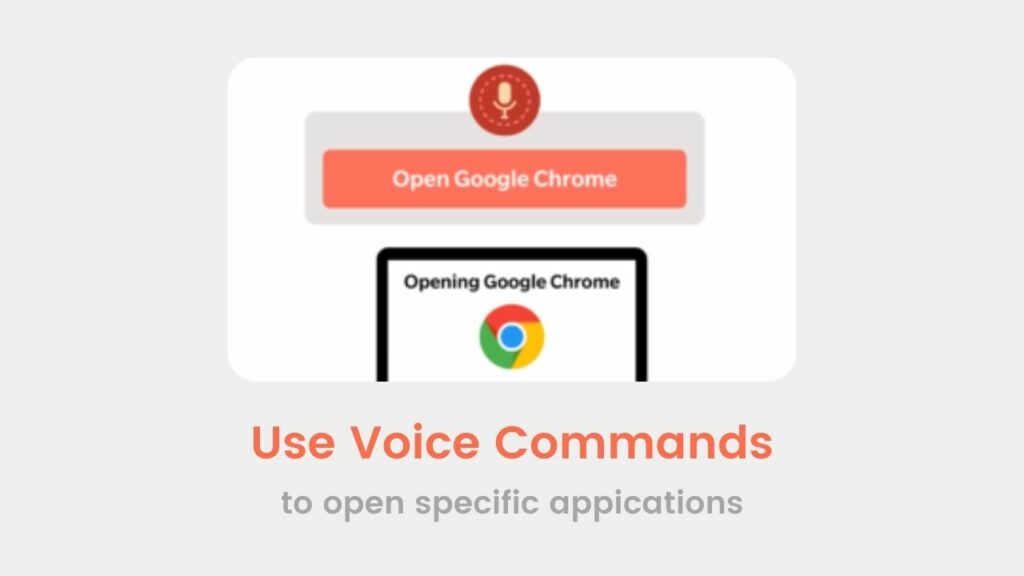
It can be extremely laborious and time-consuming to type each word character-wise. That is why we wanted to add this additional feature to help users write on their smart devices without the need for any external keyboard and without the use of their hands. All that they have to do is speak into the smart device and make necessary changes if any. This allows them to experience the hands-free setup overall.
Mouseware also supports voice typing in 5 regional languages including Tamil, Hindi, Telugu, Marathi, and Gujarati.
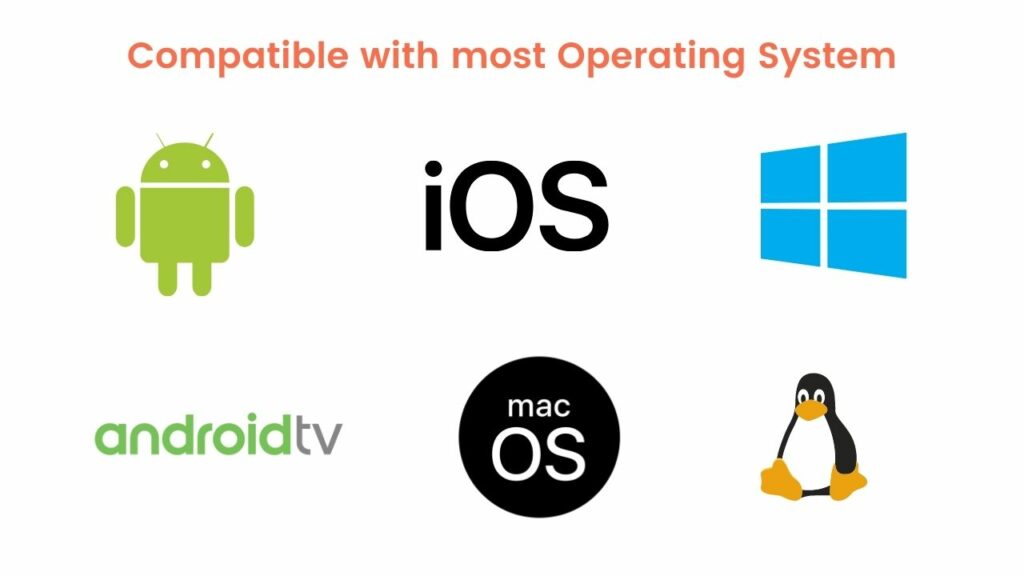
Mouseware works across all smart devices including tablets, smartphones, laptops, desktops, and smart TVs.
It is also compatible with operating systems like android, IOS, Windows, Linux, Android TV, and Mac OS
It is truly inspiring to see that so many individuals break stereotypes and their own limiting beliefs to achieve their goals and dreams.
I do hope, from the bottom of my heart, that people with upper limb disabilities and individuals with other disorders can benefit from this solution.
It is not easy to sustain in a tech-obsessed world without being able to operate smart devices. Hence, I am sure that this small device will pave the way for a big change.
If you think that you or someone you know will greatly benefit from MouseWare, You can pre-order Mouseware from the Link below.
If you want to share your feedback, suggestions, and opinions with me, drop a comment below, and I would love to connect with you.